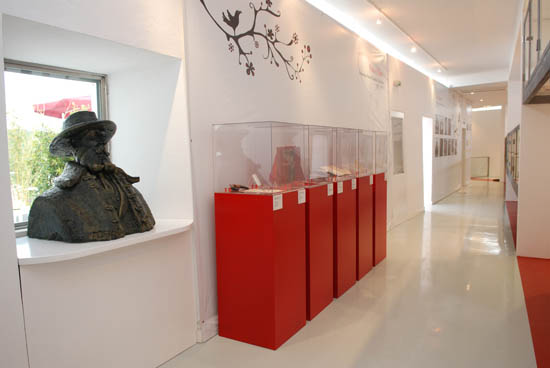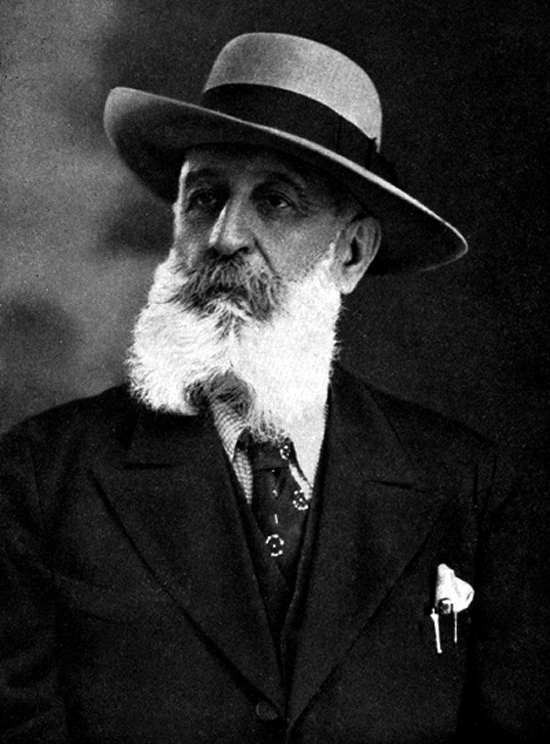 This Wednesday, December 3rd, is celebrated another anniversary of the birth of the poet from Altense, Cândido Guerreiro. To mark the occasion, the Cândido Guerreiro and Condes de Alte Museum Center holds two thematic exhibitions that will be open to the public until the end of the year.
This Wednesday, December 3rd, is celebrated another anniversary of the birth of the poet from Altense, Cândido Guerreiro. To mark the occasion, the Cândido Guerreiro and Condes de Alte Museum Center holds two thematic exhibitions that will be open to the public until the end of the year.
Thus, from today onwards, the exhibition “Life and Work – Francisco Xavier Cândido Guerreiro (1871-1953)” can be visited. This Exhibition includes books and documents that belonged to the poet, works by him, letters, postcards and photos of the poet, his family and friends, and various personal objects in museums.
On the 5th anniversary of the Cândido Guerreiro and Condes de Alte Museum Center, which took place in April, the project Dos affections are born collections was born – let's build our exhibition. Listening, sharing and dialoguing with children born in 2009 about collections and affections was the objective, starting from the story The boy who learned to fly.
For five months, an activity was held, inviting girls and boys from preschool in Alte to work on five themes – Does my family make collections? What did I do on vacation? What is my favorite object? fears. What object helps me when I'm afraid? and When I'm big, what do I want to be? – for each one the participants brought an object. This is how the exhibition “I'm 5 years old… I'm like this” was designed, which marks the end of this activity.
Divided by seven showcases, as many as the children who participated in the project, this Exhibition presents the objects brought by each child over these five months, intending to be a first contact with concepts such as collection and exhibition, but above all the first contact with the Museum as a place of affection and people who hide behind exposed objects.
The two exhibitions can be visited from Monday to Friday, from 9:00 am to 17:00 pm. Admission is free.
Who was Cândido Guerreiro?
 Francisco Xavier Cândido Guerreiro was born in Alte, in 1871.
Francisco Xavier Cândido Guerreiro was born in Alte, in 1871.
In 1889 he began studies at the Diocesan Seminary of Faro. In 1892 he gave up ecclesiastical life. After the death of his father, he began working to help support his mother and aunt who were in his charge. From that time on, he embraced several professions.
With a very intimate relationship with the words that illuminate the mirror of a context of the wonderful, the imaginary and the cult, his verses close the portrait of Francisco Xavier Cândido Guerreiro. In 1895, he edited the book of poems Rosas Desfolhadas, which he dedicated to the poet João de Deus. Around this time, he fell in love with the poet Maria Veleda (Maria Carolina Frederico Crispim) with whom he had a son he adopted, Cândido Guerreiro da Franca.
However, encouraged by his friend and poet João Lúcio, he decided to finish high school and, in 1903, entered the University of Coimbra, in the Law Course, at 32 years of age.
In 1900, he published the poem Ave Maria. It is also in the 1st year of Law that he edits the poem Ballada, which he wrote on the commission of some colleagues. The Soneto was registered in the penedo da saudade, in Coimbra.
During the student period, the poet had contact with Aristides de Sousa Mendes, the famous Diplomat who saved Jews from the holocaust of World War II; António Sardinha, one of the founders of the Lusitano Integralism movement; Alberto Veiga Simões, republican diplomat, Sousa Costa, writer who introduced him to his sister, Margarida, with whom the poet fell in love.
Cândido Guerreiro was a moderate Republican. The times that preceded Coimbra, of a conservative nature, combined with the political and literary coexistence of a nationalist and republican philosopher shaped a personality without extremes.
In 1904, he published the book Sonetos in Coimbra, which he dedicated to Margarida de Sousa Costa to whom he also dedicated Eros, published in 1907. They married in 1909 and moved to Loulé, where two children were born: Agar Guerreiro da Franca and Othman Guerreiro da France.
In Loulé he works as a notary but soon enters political life. In 1912, he was already at the forefront of governing the Municipality of Loulé. At this point, he abdicated from poetic writing. The electrification of the town, in 1916, was one of his outstanding works in favor of the municipality's development.
Some poems convey a dedicated and pragmatic spirit, a way of feeling with realism. Others reveal elaboration and complexity of spirit. From the 20s (XNUMXth century) onwards, he settled in Faro. Then he was able to devote more time to what he loved most: poetry.
On April 11, 1953, he died in Lisbon. was buried in Faro. On December 4, 2000, the transfer to the Alte cemetery was carried out.


















Comments